Keeping the smoke out
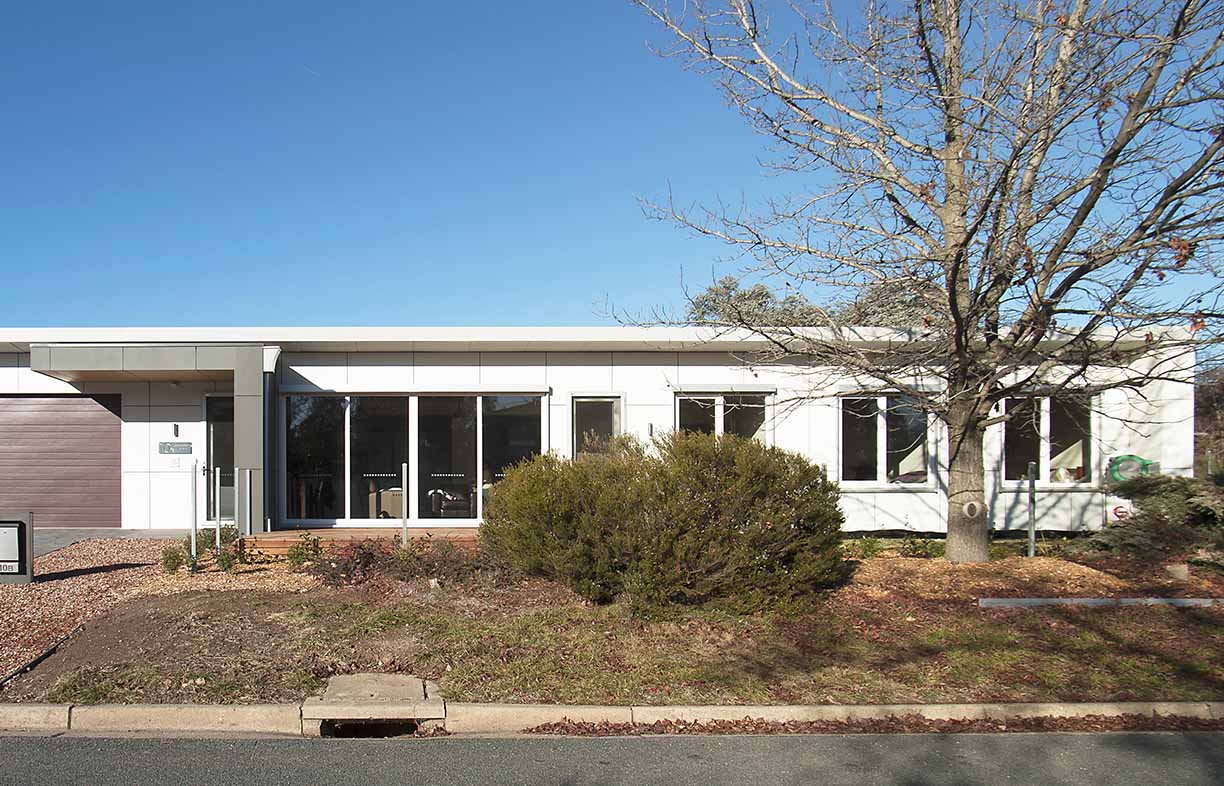
How does having a very airtight home impact on smoke infiltration? Cameron Munro and Joel Seagren present results from monitoring Passive House and ‘leaky’ homes this summer.
The recent tragic summer of bushfires has exposed not only those at the fire front but also millions of Australians living far from the fires to hazardous smoke levels. Smoke is a form of particulate matter (PM). The inhalation of particulate matter is associated with adverse health impacts, particularly respiratory conditions.
The PM levels experienced across much of eastern Australia over summer was far beyond what is typical for our Australian cities and regional areas, and well above recommended levels for healthy air quality; the recommended exposure is a mass concentration of less than 25 micrograms (µg) per m3 averaged over 24 hours (WHO 2005). Finer particulate matter (PM2.5, or particles of less than 2.5 microns in diameter) can make their way deep into the lungs and can be absorbed into the bloodstream leading both to short- and long-term health consequences, particularly among those with underlying health conditions.
Bushfire smoke particles tend to be very fine, usually under 0.5 microns (Figure 1). These very small particles can travel far from the fire zone and readily penetrate into homes and buildings, even those such as offices or shopping centres with filtered ventilation systems. For example, a coarse G4-grade filter that is commonly employed in residential air conditioning systems will only capture around 10% of smoke particles and a finer F6 filter may capture around half of these particles.
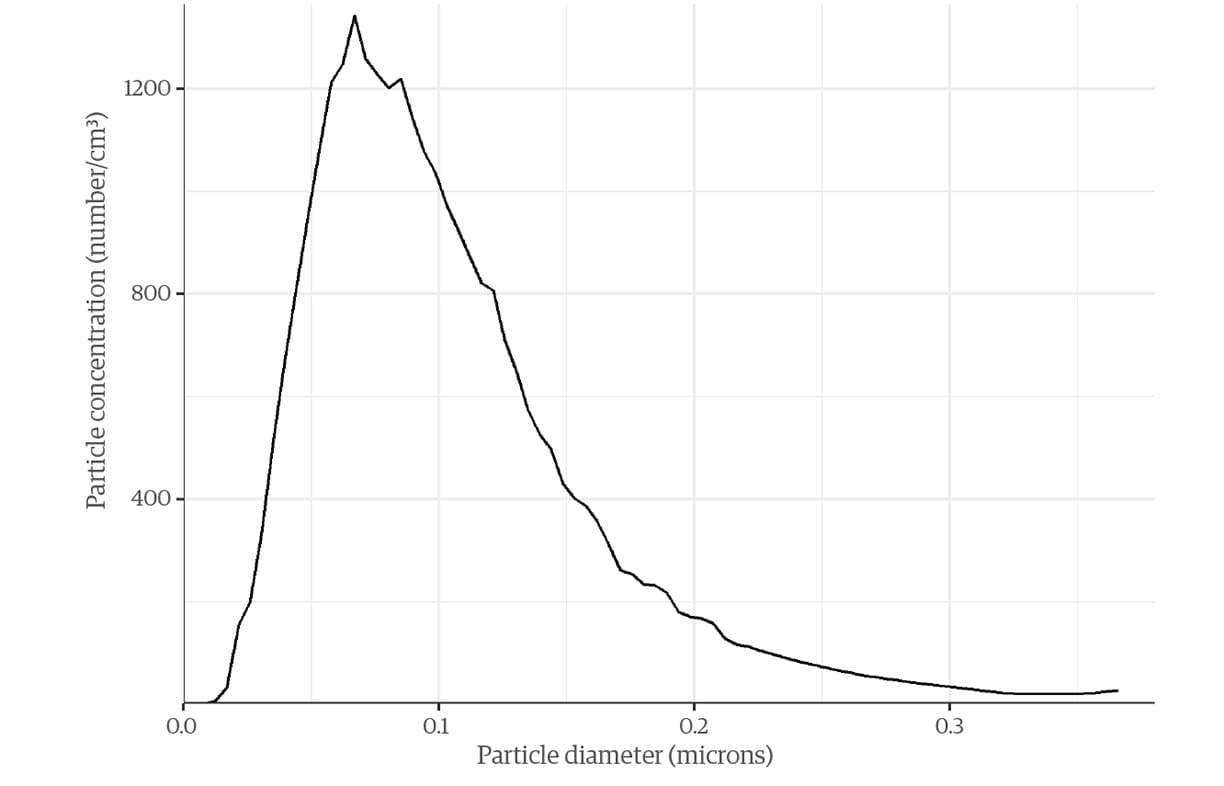
Can airtight buildings help?
One way of reducing exposure to bushfire smoke is to stay indoors and keep windows and doors shut. Homes that are airtight will reduce the infiltration of smoke through the building envelope and provide an opportunity to control particulate matter introduction via mechanical ventilation systems.
For example, Figure 2 shows two homes adjacent to one another during a recent smoke event in Melbourne. The conventional leaky building without mechanical ventilation reached PM2.5 concentrations of just under 500 µg/m3 when the outdoor levels were close to 600 µg/m3. By comparison the airtight home reached peaks of 320 to 380 µg/m3.
In other words, the airtight home achieved smoke concentrations about 30% lower than the leaky home. This was achieved in an airtight building with a rating of 1.2 air changes per hour at 50 Pa, about 15 times more airtight than standard new Australian homes, using a centralised mechanical ventilation system with a fine F7-grade filter.
In a home like this most of the smoke will be entering through the mechanical ventilation system rather than the leaky building envelope. Although the smoke levels were markedly lower than in the conventional home they still reached levels beyond the healthy threshold.
Even extraordinarily airtight buildings will experience some smoke infiltration. Figure 3 shows several days of smoke events at a home with a rating of 0.11 air changes per hour at 50 Pa, or about 150 times tighter than standard new Australian homes. Again, this home uses a mechanical ventilation system with an F7-filter. During these events the indoor PM2.5 concentrations peak at around half of the outdoor levels.
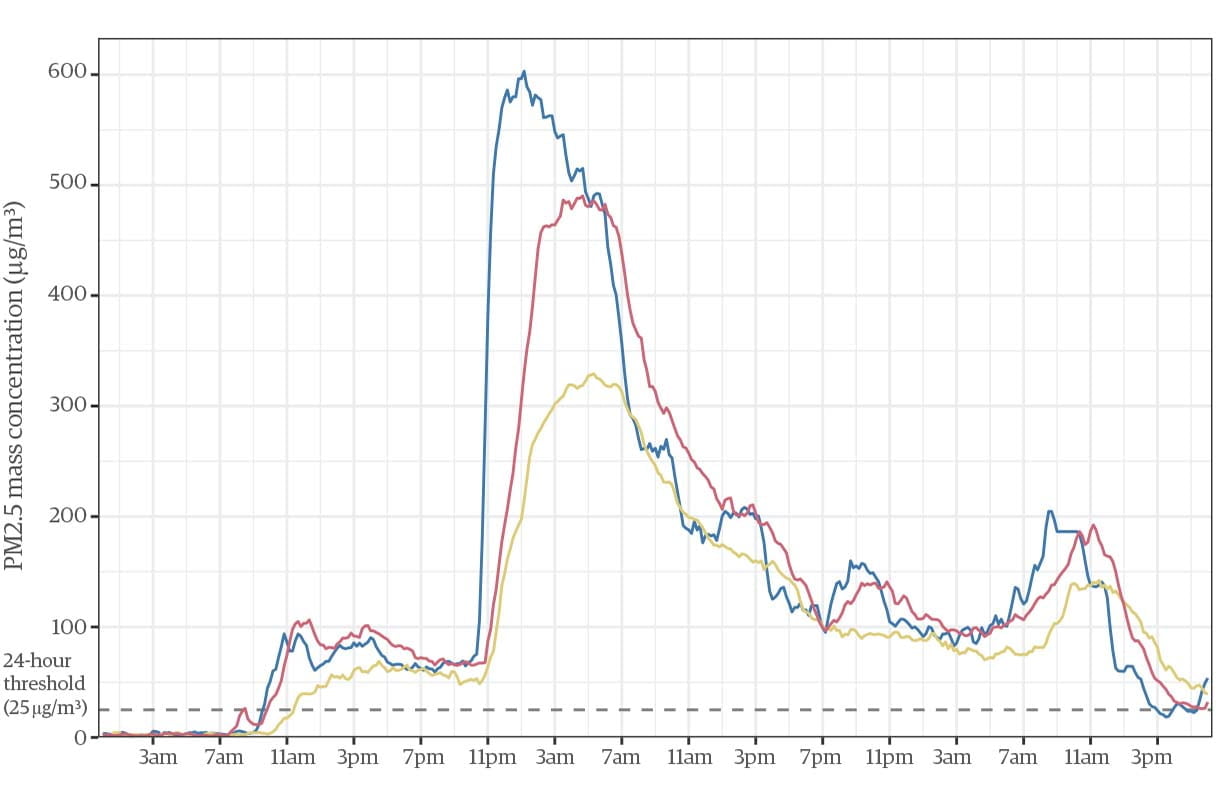
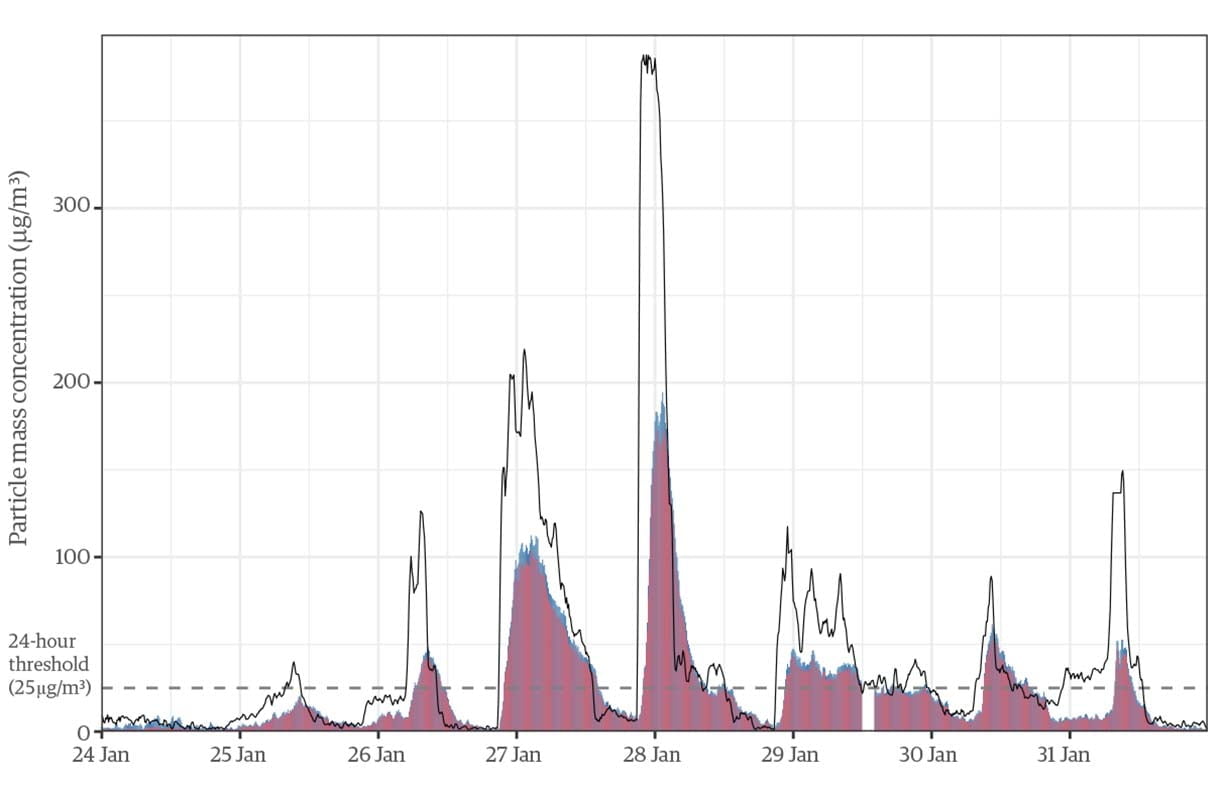
Would additional filtration help?
Smoke levels can be reduced indoors by filtering the air. There are two basic methods for achieving this: through an electrochemical process known as air ionisation, or a purely mechanical process where air is forced through an extremely fine filter. Air ionisation can lead to the generation of ozone, which can also contribute to respiratory conditions. Extremely fine filters that capture a large fraction of very fine particulate matter are referred to as high-efficiency particulate air (HEPA) filters.
A very tight building envelope provides the opportunity to directly control the incoming air quality, as almost all incoming air will come through the mechanical ventilation system. By contrast, in a leaky home it will be necessary to have air purification in each occupied room, as air infiltration and movement will occur in unpredictable ways— it will not be sufficient simply to purify the air in one room and assume that will migrate to other occupied rooms.
To achieve a healthy indoor air quality under prolonged periods of very high particulate levels even in an extremely airtight home will require either air purification independent of any mechanical ventilation system (a stand-alone unit) or HEPA filtration in the mechanical ventilation system.
Independent filtration systems are readily available for well under $1000, but several units may be required for a typical home, and they may need to be operating continuously if the home is very leaky. When looking for a filtration unit it is important to consider the ‘clean air delivery rate’, which gives an indication of the volume of clean air that the unit can deliver. If the home is already airtight the filtration system will not need to be as large, or run as often, as in a leaky home. Because the air will circulate in unpredictable ways within a home, it is likely that a purifier may adequately clean the air in the room in which it is located but have less impact in rooms far from the unit. There are varying rules of thumb for sizing filtration systems, but for a standard leaky home a unit would probably need to have a clean air delivery rate sufficient to filter at least twice the room’s volume in an hour.
In extremely tight homes that are supported by a mechanical ventilation system, such as in Passive Houses, it is possible to fit a HEPA filter to the centralised ventilation system. This should provide consistently clean air throughout the home and at lower energy cost than by using multiple air purifiers. An example of the marked improvement that can be achieved with a HEPA filter is shown in Figure 4. In this example two identical certified Passive Houses in Canberra are shown. Both have identical mechanical ventilation systems with an F7 filter on the supply duct. One of the homes then has a HEPA filter fitted downstream of the ventilation system. This filter was a cheap (sub-$50) unit retrofitted onto the supply air ductwork; the homeowner built the filter box himself.
The home with the F7 filter reaches peak PM2.5 concentrations around half of the outdoor levels but still at a hazardous level. By contrast, the home with the HEPA filter achieves markedly lower PM2.5 concentrations which are almost always within healthy levels. Indeed, the only time when the PM2.5 levels exceed 25 µg/m3 are short periods when the occupants are cooking.
HEPA filters can capture over 90% of smoke-sized particles and the resulting particulate levels shown in Figure 4 are consistent with this level of filtration. However, this performance comes at a cost. Increased pressure drop across the filters will increase fan power consumption and can increase noise as the fans have to work at a higher speed to compensate. Commercial systems are likely to cost a few hundred dollars and have lower pressure drop than the retrofit system shown here. Additional filter replacement costs are also the other obvious change, with finer grade filters typically being more expensive, and requiring more frequent replacement.
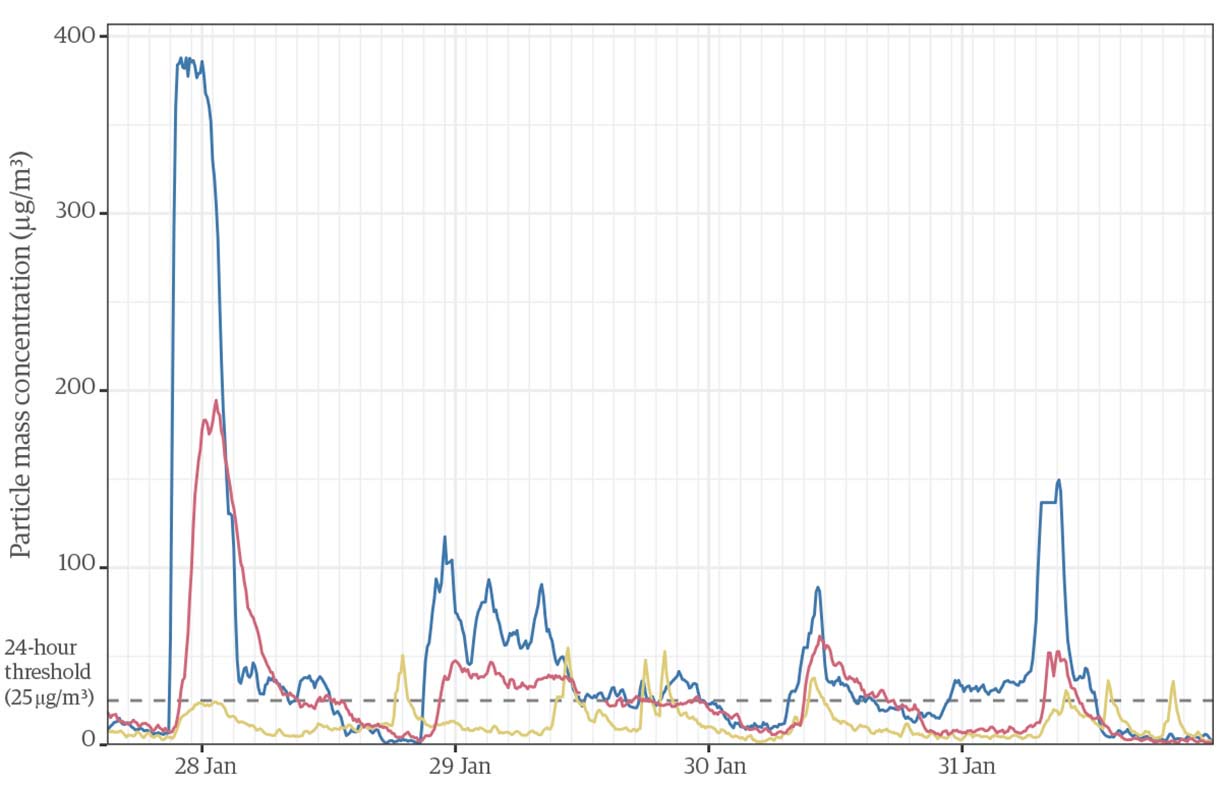
How can you reduce particulate exposure?
The evidence would suggest that ensuring your home is as airtight as possible will help reduce particulate concentrations, but when there are prolonged extreme outdoor conditions this on its own is insufficient to maintain a healthy indoor environment. In these cases additional filtration is warranted.
Homes that combine very high levels of airtightness with centralised mechanical ventilation can use higher grade filtration to very effectively reduce PM levels. They can provide much greater confidence that the whole home is reaching consistently lower particulate levels than would multiple air purifiers operating in a conventional home, and do so with less energy usage. However, because of the additional energy use and filter replacement costs, a HEPA filter installation is only warranted during exceptional events unless the occupants are very sensitive to particulate matter. The ideal solution would be a HEPA filter than can be readily installed and removed downstream of the heat exchanger in a mechanically ventilated home for short periods when required.
We should also bear in mind the wider context—that although the smoke events were unprecedented and presented a very visual image of air quality there is no known safe threshold for particulate exposure. Over our lifetimes our total particulate exposure will likely be far higher from the steady, much lower levels that constantly exist in homes and outdoors. For those without other health conditions these levels may have negligible health consequences. But for those who are sensitive, or otherwise want to minimise their exposure, measures such as avoiding all combustion (no gas or wood burning indoors), cleaning regularly and avoiding hard-to-clean surfaces such as carpet will help to reduce exposure. Shifting to using electric vehicles or, better, riding or walking, can reduce particulate levels as transport is a major contributor to human-induced particulates in built-up areas. Wood fires should also be avoided in urban locations as these not only introduce particulates inside a home but also spread across the neighbourhood and will infiltrate into neighbouring homes.
How are filters classified?
There are a number of standards used to define filters depending on the size of the particulates they capture. Most filters in Australia are described according to groups and classes defined in EN 779:2012. This standard groups filters as coarse (G), medium (M) and fine (F). Within each group, filters are further defined using a number. For example, a G1 filter is the coarsest filter within the G group and the G4 filter is the finest. Even finer than F-grade filters are H-grade filters defined by a different standard (EN 1822), also known as HEPA (high-efficiency particulate air) filters. These filters are more commonly used in hospitals and laboratories where there are extremely stringent requirements on air quality. More recently, in 2016 the ISO 16890 standard was released to replace EN 779:2012. Filters tested according to this standard are graded with terms such as ePM1 and ePM2.5. Currently, most filters in Australia continue to be graded using the older G, M, F and H categories.
Resources:
WHO 2005: Air Quality Guidelines: Global Update 2005, World Health Organisation, bit.ly/2wwyWCk
Dennekamp and Abramson 2011: ‘The Effects of Bushfire Smoke on Respiratory Health’ in Respirology 16 (2)
Reid et al 2016: ‘Critical Review of Health Impacts of Wildfire Smoke Exposure’ in Environmental Health Perspectives 124 (9)
Further reading
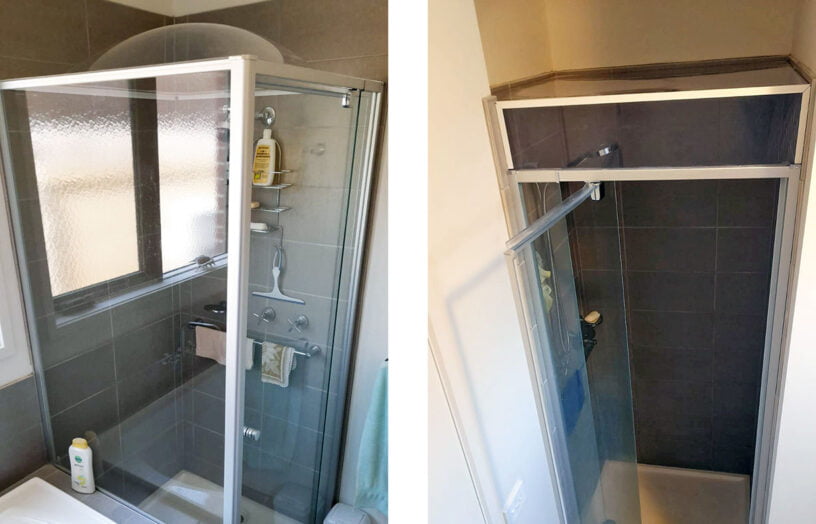 Efficient homes
Efficient homes
Ditching the shower fan
By fitting a lid on the shower, exhaust fans are not needed when showering. John Rogers describes this simple retrofit, using both a commercial product and a great looking DIY version.
Read more Efficient homes
Efficient homes
Building for a changing climate
Are we building homes for the future, or for the past? Rob McLeod investigates how climate change is impacting home energy ratings and the way we build our homes.
Read more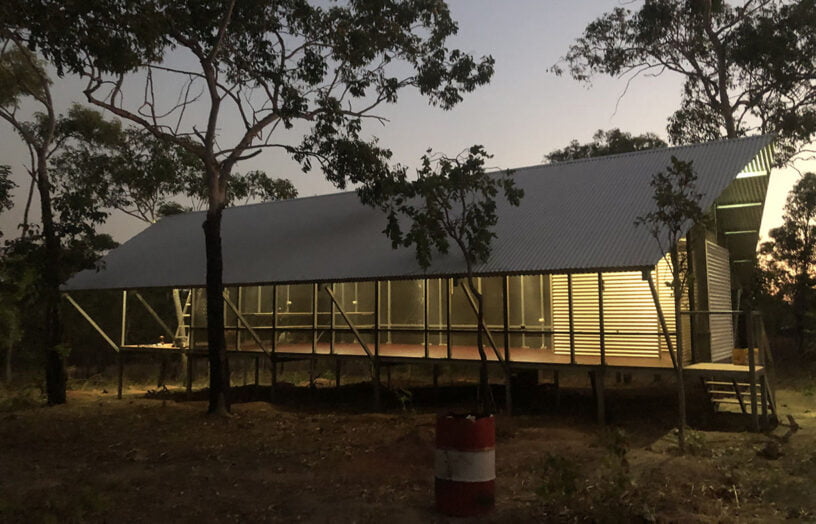 Efficient homes
Efficient homes
Remote communities leading the charge
We learn about four sustainability and renewable energy projects in remote Australia.
Read more

